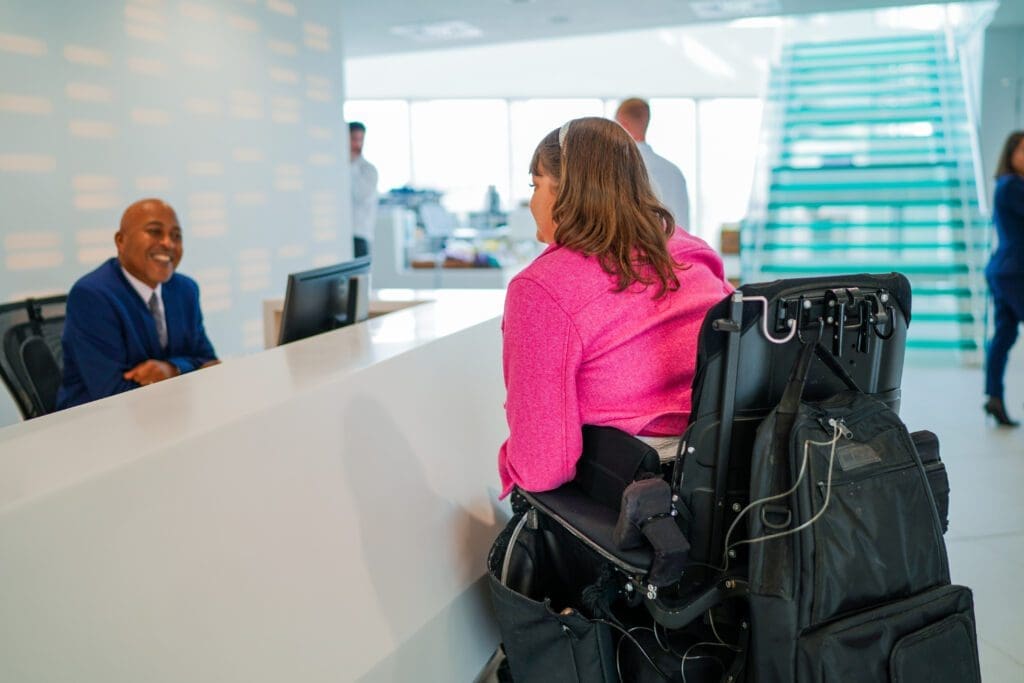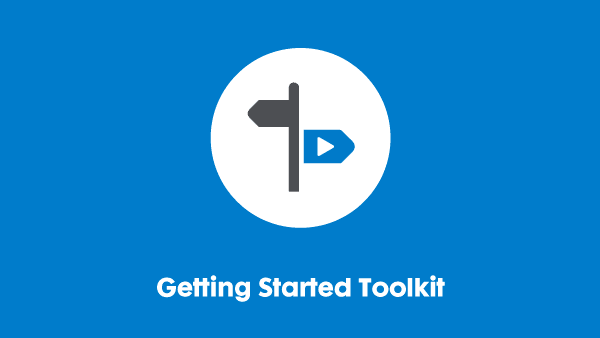Last updated: 12 December 2024
Good customer service
This resource is part of our Disability Essentials range. You can find here the other free resources that are included in this range.

Receiving good customer service is important to everyone, but it can be particularly important to disabled customers and clients who may have very specific needs and be concerned about how these will be met by your organisation.
When surveyed about physical access, 72 per cent of disabled people said that were more likely to visit somewhere new if they were welcomed by staff or the venue appeared to care about accessibility.
Quick tips:
- Never assume the existence or absence of a disability.
- Always ask the customer how you can best assist them.
- Remember, to meet the customer’s needs you may need to do things differently, but the standard of service you provide should be the same.
- Be aware of accessible facilities and equipment available, such as ramps and hearing loops.
- Be prepared to offer and spend extra time with someone who might need it.
Knowing your customer
It is likely that more than one in five of your customers and clients will have a disability and many will have a condition which is not immediately visible. A customer may have a disability but may never mention it to you or describe themselves as being “disabled”.
Disabled customers should be treated with the same courtesy and respect as anyone else. Listen to the customer and respect their choices, as you would any other customer.
Using your service
Under the law, you must ensure that disabled customers can access your service in the same way, or as close as possible to the same way, as customers without a disability.
When this is not possible, you must offer a reasonable alternative. This may mean doing things differently and providing the service in a different way. However, the level of service should not change.
Think flexibly about the way you serve disabled customers in order to meet their needs.
Premises
- Make sure signage is clear and direct.
- Grant access to assistance and therapy dogs. Assistance and therapy dogs provide vital support to a wide range of disabled people and people with long-term conditions.
- Know about the accessible facilities that are available in your building, such as lifts, toilets, ramps and hearing loops. Regularly check that these facilities are working. If they are not, make sure you inform disabled customers and offer alternatives. You can’t help things breaking down, but you can ensure that you have contingency measures for when they do.
- Be aware of emergency evacuation procedures and how they affect people with disabilities. Be ready to explain procedures to people if needed.
Customer support
- Some disabled customers may not feel confident asking for help. Always be on the lookout for people who may need extra assistance and offer help regardless of whether or not you think the person has a disability.
- Some people may need extra time paying for goods or completing a form. Always be patient and never rush the customer, even if other customers are waiting.
- Have local public transport information available including numbers of accessible taxis.
Returning customers
Disabled customers are more likely to return if they receive good customer service. Providing such service gives out a positive message to everyone about how much you value all your customers.
If you require this content in a different format, contact enquiries@businessdisabilityforum.org.uk.
© This resource and the information contained therein are subject to copyright and remain the property of the Business Disability Forum. They are for reference only and must not be copied or distributed without prior permission.


